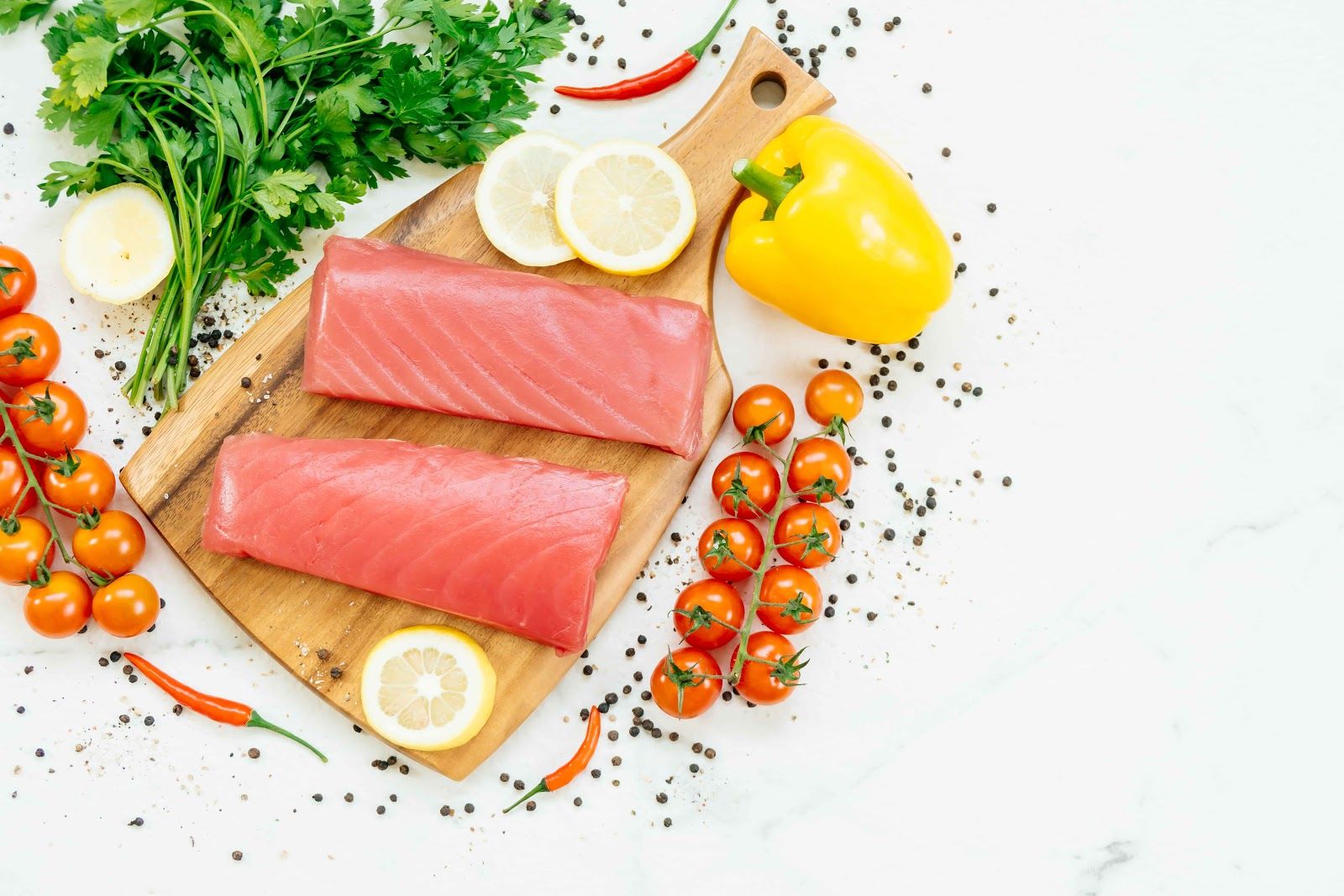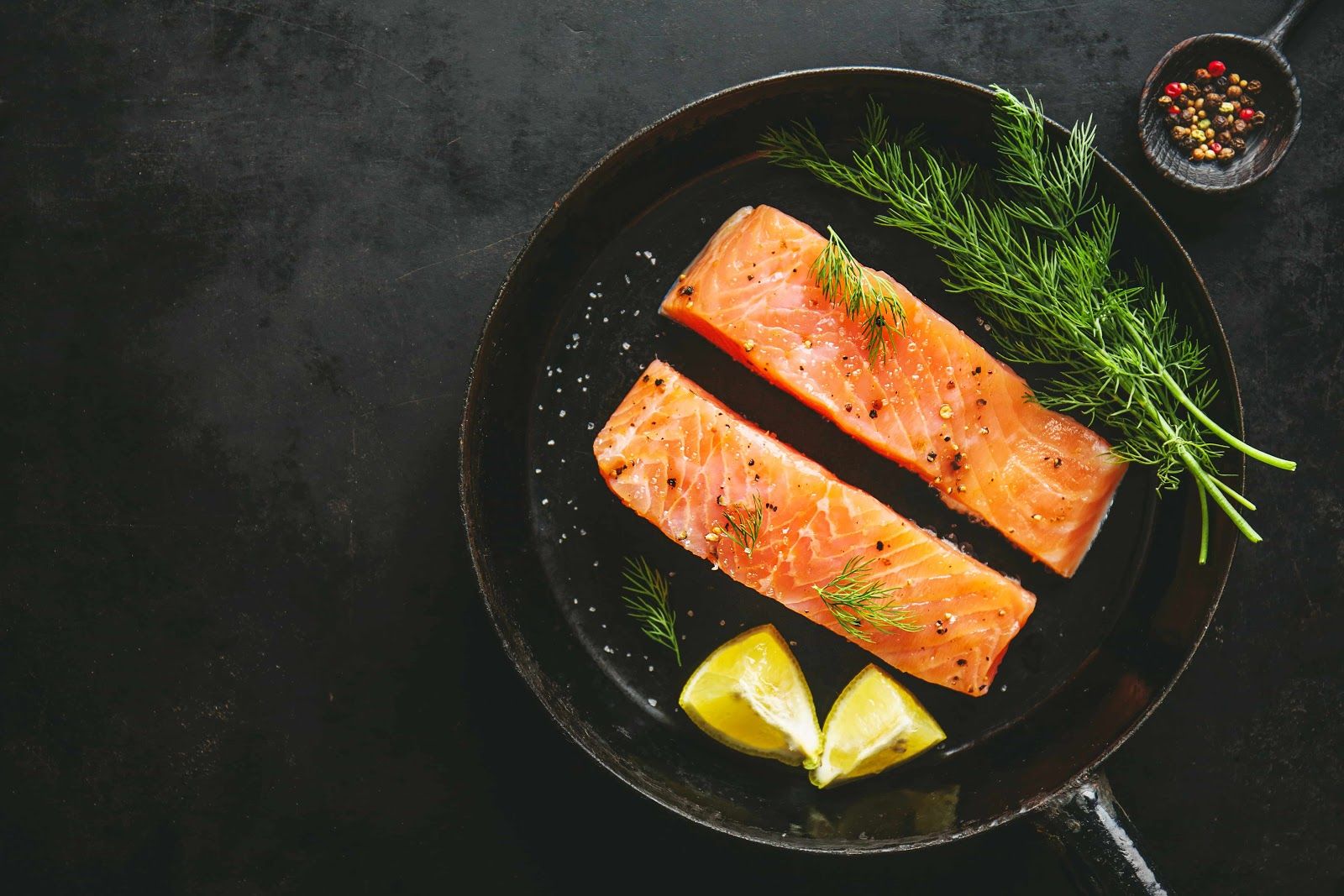Seafood is a magical place where both taste and nutrition join hands. Between the appetizing recipes made for crabs, oysters, lobsters, shrimp, etc. it can be hard to decide on what to eat.
But it is no doubt that fish emerges as the star of the show in this case. We have all heard about why we should make fish a part of our diet if we can. Fish can be a rich source of protein and healthy fats, amongst other nutritive constituents, not to mention that it is absolutely delectable to eat. Be it the endless, delicious varieties of sushi or the spicy, chewy flavour of prawns curry, there are many choices available for you, each one as mouth-watering as the other.
Each fish has its own unique traits, from a special flavour to the way it can contribute to your health. Hence, it is always good to be aware of the nutrition information of the fish you eat, so you can curate your diet according to your needs. Some people might go for certain fish if they are aiming for heart health, while others might go for a different fish if they want to build muscle.
Knowing the correct fish for you can help you plan a richer, more balanced diet that can bring many positive changes to your lifestyle.
Today, we are going to try and help you out a little, by comparing the qualities of two popular fish: tuna and salmon. Tuna and salmon are both widely eaten all over the world and can be an excellent addition to your diet. But is one of them healthier than the other? Between tuna and salmon, is there one which might suit you more? Read on to find that out!
Benefits of Tuna
Tuna is a large predatory fish which is found in the open oceans all over the world. Its flesh can range from pink to dark red, depending on the variety chosen. The colour comes from a protein stored inside its muscle. This protein, myoglobin, breaks down when the fish is heated, which is why cooked tuna tends to look greyer than raw tuna.
 Tuna Vs. Salmon
Tuna Vs. SalmonTuna is available in canned varieties, as well. Tuna can be enjoyed raw, such as in sushi, or cooked, according to preference.
Tuna has higher protein content, while also having lower fat and calories per serving. This makes tuna especially healthy and an excellent choice, if you are trying to increase your protein intake.
As we all know, nearly all fishes contain traces of methylmercury as a result of industrial pollution. However, the mercury content of tuna is more of a concern because tuna is a larger fish i.e. it preys on smaller fish, which means it has higher levels of mercury within it.
Some varieties of tuna have more mercury content than the others, for eg. albacore tuna, so a choice should be made with proper knowledge.
Benefits of Salmon
Salmon are a type of fish which breed in rivers but live most of their lives as adults in the sea. The flesh of salmon varies in colour, from pink to deep reddish-orange. The colour of salmon is a result of their diet, which is to consume tiny crustaceans and krill, which are rich in carotenoids.
 Tuna Vs. Salmon
Tuna Vs. SalmonOut of all these carotenoids, astaxanthin is particularly found. This astaxanthin does not break down when heated, which is why salmon retains its red colour even while being cooked.
Canned salmon is available as well, for quick meals. Salmon can be eaten raw, such as in sushi, or enjoy its tender, meat when cooked, depending on your preference.
Salmon has a higher fat content, with most of its fat being omega-3 fats, which are very healthy. Salmon also contains Vitamin D, which helps in the strengthening of bones. Being a smaller fish, salmon generally has lower levels of mercury.
Tuna Vs Salmon
So, now that you know a bit more about both are contenders, you might be wondering who would come on at the top in the match between tuna vs. salmon. Well, the answer might just be a bit more complicated than you think because different criteria must be compared.
1. Firstly, the place where tuna and salmon differ is in their colour after cooking. Tuna turns greyer, due to its protein, myoglobin, breaking down while salmon remains red throughout.
2. Secondly, salmon has more fat content than tuna, which means that it remains moist even after being cooked to high temperatures. This means that salmon can be prepared in various ways, such as roasting, grilling, poaching, etc.
On the other hand, if tuna is a leaner fish, which means it is less fatty. Thus, it has a tendency of turning out dry if cooked too much and hence, is usually only prepared up to a medium-rare level.
3. Thirdly, tuna contains more protein and less fat as well as fewer calories per serving. Hence, it can be a particularly good addition to a muscle-building diet.
4. Fourthly, in comparison to tuna, salmon contains more healthy omega-3 fats per serving. Studies have suggested that these fats might reduce the chances of heart diseases and help in promoting heart health.
5. Salmon also has a much higher quantity of Vitamin D per serving as well. Vitamin D is not found in many foods and hence, when it comes to this, salmon easily beats tuna. Also, salmon’s bones are soft when cooked and can be a rich source of calcium.
6. Between tuna and salmon, tuna is the bigger fish, predatory in nature, which means that it consumes smaller fish. Hence, it has higher mercury levels than salmon. Though certain varieties of tuna such as light canned tuna have lower mercury levels, others such as albacore (white) tuna have higher mercury levels.
Hence, organisations such as the Food And Drug Administration (FDA) have suggested people such as children and pregnant women limit their intake of tuna, to 2 servings per week for light tuna and 1 serving per week for white, canned tuna.
Hence, in the match between tuna vs. salmon, each of the fish proves to be healthy and beneficial in different ways.
Which One is Healthier, Tuna or Salmon?
So, which one is healthier, tuna or salmon? As you can see, it really depends on what specific benefits you are seeking. For example, if you want a diet rich in omega-3 fats and Vitamin D, focusing on building heart health, increasing good cholesterol and strengthening your bones, then salmon is the fish that you are looking for.
 Tuna Vs. Salmon
Tuna Vs. SalmonOn the other hand, if you are seeking a diet higher in proteins, lower in fat, having fewer calories per serving, then tuna is your fish. It is an excellent addition to any muscle-maintaining and building diet.
Finally, tuna has higher mercury levels in comparison, so you should limit your intake, especially when it comes to canned albacore tuna. The U.S. Environmental Protection Agency recommends that mercury levels in a fish should not exceed 0.3 μg per gram of wet weight. So, be cautious of that when eating.
The best decision would be to not choose just one of tuna and salmon but to go for both. After all, a rich diet is one that involves different types of foods and nutrients. It is always best to incorporate different varieties of fish, not just tuna and salmon so that your body can get a richer, more balanced supply of nutrition.
Seafood: The Magic Food
Ultimately, know that seafood is magic food because it has so many benefits packed into a delicious taste. If you are someone who enjoys it, try not to limit yourself to one kind of fish. Instead, try out others, enjoy all the health benefits available to you.
 Tuna Vs. Salmon
Tuna Vs. SalmonMake sure to be cautious of allergies and to see how your body reacts to certain types of seafood. If you have an adverse reaction, do not continue eating it, no matter what the nutrients. The most important thing is to choose a food that your body is comfortable with.
Now, get those forks and spoons out, and get ready to experiment with the wide range of dishes!
Also read- Healthy Foods To Gain Weight

